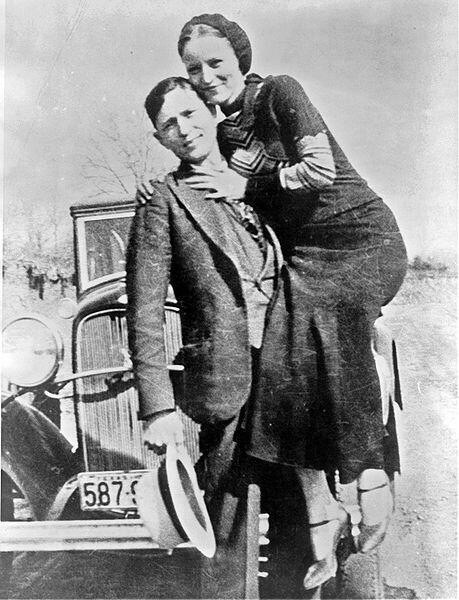Prev Section: OK, I have a beautiful game now, so what?
Up Main page
Section: What about sequential games? Next
Solution concepts
In non-cooperative games, the individual rationality principle (IRP) is the sole guide of of players’ decision making. Consequently, each player tries to determine the best actions for herself by comparing her payoffs between different outcomes
BUT
The final outcome will also depend on the decisions of other players. This is where the interactive dimension comes to complicate the decision process.
In general, each player needs to form expectations about the potential decisions of other player(s), in order to make her decisions.
Hence the need for strategic thinking.
This is in general different from a pure optimization-based decision problems!
A first concept of solution
In some games, it can happen that a player always gets less with strategy
than a strategy
, whatever the strategies chosen by other players.
When
is available, she would never choose
without even caring about what other players could decide
We say in this case that the strategy
is dominated by the strategy
for this player
The domination is strict if the first inequality is strict: player
losses if she chooses the strategy
over
, whatever may be the decisions of other players.
We can expect that a rational player would never choose
instead of
and hence, we can eliminate
from the game. We can do this sequentially for all players, and if we are very lucky, only one outcome may end up by surviving.
We can expect in this case that our players would necessarily choose the strategies corresponding to this outcome.
This would give us the outcome we can expect for this game (only if we are very lucky!)
Another example: Bonnie & Clyde
Bonnie and Clyde are two bandits who really existed in the South of the USA (Texas, Iowa, Oklahoma), going from town to town and robbing banks between 1930 and 1934. They are killed by the Police at Louisiana, in 1934.

The historical Bonnie & Clyde

Bonnie & Clyde in Arthur Penn’s 1967 movie (Faye Dunnaway & Warren Beaty)
- After a robbery, they get arrested at the vicinity of the town,
- but after having already hidden the money, and without any incriminating proof
- Sheriff Clint puts them in two separated cells to interrogate them separately
- Each can either
- [D]eny to have anything to do with the robbery or
- [C]onfess and bring the proof of culpability of the other person
And, they may get what they deserve...
- If both deny, the judge has no real proof of culpability and they are condemned to a light sentence (1 year)
- If both confess, their crime is established and they are condemned to a heavy sentence (8 years)
- If only one confess, the sheriff assures that
- the confessing person will be released (0 year)
- while the denounced one will get the heaviest sentence as the sole perpetrator (10 years)
What should each do under these conditions?
Lets put their problem in a normal form. Their payoff will simply be: the negative of the number of years in jail in different outcomes, their objective being to minimize the number of years of course.
| Clyde | |||
| Bonnie | |||
- A priori, the sentence for Bonnie depends on what Clyde would do
- but
- We observe for Bonnie that and
- and Bonnie prefers to Confess whatever the choice of of Clyde
- The strategy D is strictly dominated by the strategy C
- In fact, this is also true for Clyde
| Clyde | ||
| Bonnie |
- The only outcome we can expect in this situation is: (C,C)
Both confess and bring the proof of culpability of the other and get a heavy sentence, while by denying they could get away with only one year of jail.
A paradox of the individual rationality principle, but a very robust outcome in this particular situation.
In fact we don’t need much strategic reasoning in such a situation, but such situations are rare!
(You are invited to check such strategies in the Lockdown game above)
We need a more general concept of solution.
Nash equilibrium
In his Ph.D. thesis [Nash, 1950], John Nash proposes a general concept of solution for non-cooperative games.
The idea is looking for a situation similar to a physical “equilibrium” in the game:
An outcome
such that, if attained, it would persist because no player would like to change her strategy anymore.
No player could get a better payoff by changing strategy from the equilibrium outcome:
We call such an outcome as
a Nash equilibrium
How to determine Nash equilibria in a game?
A first approach: Brute force algorithm by elimination:
- Consider each potential outcome and check if at least one player want to move from this outcome (deviate from the outcome)
- If yes, this outcome cannot be a Nash equilibrium and must be eliminated
- Any outcome that survives to this selection, if any, is a Nash equilibrium.
This approach may quickly become quite cumbersome for complex games with many potential outcomes.
A more direct and constructive method
Nash equilibrium: An outcome in which each player
is already playing her best strategy given the strategies played by the others.
She is already playing her best reply,
, to the strategies of the others. For
and
:
We can hence determine
, and the intersection between them, if it exists, must be a Nash equilibrium
:
Consequently, a Nash equilibrium is a fixed point in the strategy space, and its existence conditions are given by fixed point theorems.
Reconsidering the Lockdown game
| S | |||
Has the lockdown game a Nash equilibrium?
We can determine the best replies and check if they have an intersection. We represent these best replies using simple symbols:
for my best replies and
for the policeman’s.
No possible intersection between our best replies. Hence, no possible compatibility between the motivations of these players.
No Nash equilibrium in this game
This is an important shortcoming of this concept solution: In many games a Nash equilibrium in action–based strategies like here does not exist
And Bonnie & Clyde?

We proceed in the same manner, by analyzing their best replies.
Best replies of Bonnie


Best replies of Clyde


| C | |||
| B | |||
| C | |||
| B |

|
||

|

|
||
- is at the intersection between these best replies
- is the only Nash equilibrium of this game
Even if collectively the best outcome would be
, Bonnie and Clyde end up in the worst collective outcome, because of their individual incentives.
This is what makes this game a canonical game representing many social and economic interaction situations:
- Public spending policy choices between countries;
- Inflation strategy of a central bank facing households
- Firms trying to form a cartel...
The coordination assumed by the Nash equilibrium does not drive the decisions towards the socially most efficient solution.
This is another property of the Nash equilibrium concept:
A Nash equilibrium outcome is not necessarily socially optimal
We have already seen that a NE does not necessarily exist in all games.
When it exists, Nash equilibria very commonly are not unique but, if there are two (or more) Nash equilibria, how to know on which one the agents would coordinate? Hence many supplementary equilibrium concepts in order to reduce this multiplicity by eliminating some of these equilibria by imposing more and more stringent conditions on the rationality of the agents.
Last but not least: Even if it exists and it is unique, the equilibrium concept itself does not say anything on how the agents may (or may not) coordinate on the corresponding outcome.
This equilibrium concept is not limited to simultaneous games.
Prev Section: OK, I have a beautiful game now, so what?
Up Main page
Section: What about sequential games? Next
Sommaire
(c) Murat Yildizoglu, 2021-
(c) Murat Yildizoglu, 2021-